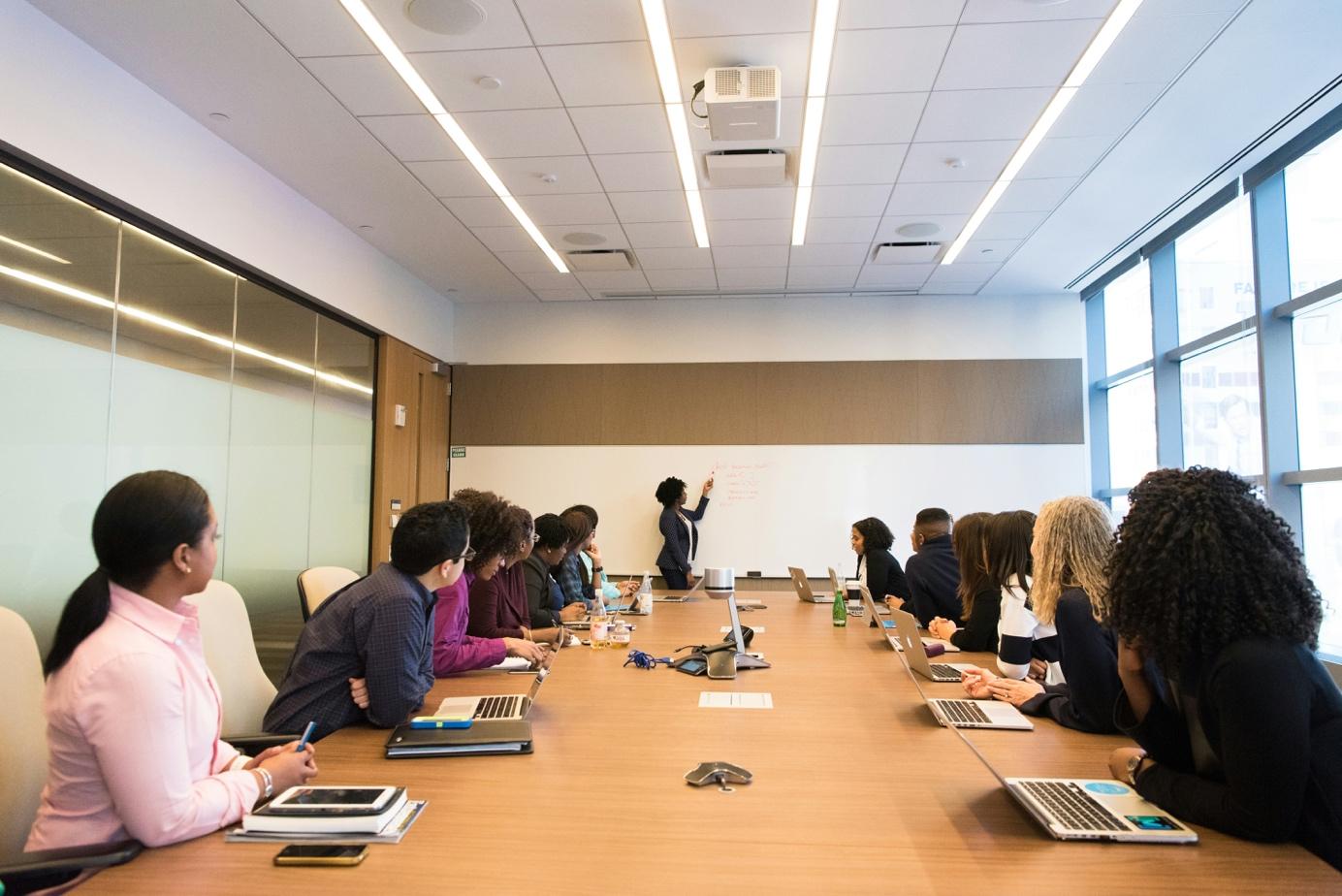Face-to-face meetings: benefits and tips for an effective meeting

As the business world is becoming more and more digital, face-to-face meetings remain an essential element in strengthening team cohesion and promoting direct interactions. Even though virtual communication tools offer great flexibility, it is important to continue to organize face-to-face meetings to prevent team dynamics from running out of steam.
However, given the amount of time employees spend in meetings each week, these meetings should be carefully planned. Organizing a meeting requires looking at several decisive elements, for example: the objectives, the agenda, the list of participants, or the choice of the boardroom. Formeret gives you all its advice to guarantee the success of your meetings.
What are the benefits of in-person meetings?

More flexible and easier to organize, video meetings have become a reflex for many teams since the health crisis. However, it remains essential to continue to schedule in-person meetings: these offer a number of advantages that remote meetings sometimes struggle to provide.
The main benefits of a face-to-face business meeting are the following:
- One smoother communication : non-verbal communication plays a key role in the transmission of messages, and part of this communication is hidden in videoconferencing. Face-to-face not only promotes better mutual understanding, but also offers more spontaneity in exchanges.
- Better group dynamics : the physical presence of all participants makes it possible to create a more dynamic and more productive working environment. Employees can react more easily, ask questions, etc., which makes collaboration easier.
- An increase in attention : If you've ever been to a video conference, you know how hard it can be to stay focused when it drags on. In person, exchanges are more lively and the commitment of participants is strengthened.
- Increased productivity : face-to-face discussions are generally faster and more effective. In person, it's also easier to create informal moments or take a break, which can sometimes help with problem solving. This ease of exchanges favors decision-making.
- Strengthened team cohesion : human contact is essential to create cohesion and a sense of belonging. A face-to-face meeting brings more conviviality and facilitates professional relationships. For example, at the end of the meeting, employees can exchange views and debrief, which does not necessarily happen after a remote meeting.
The most important thing is to succeed in finding the right balance between the number of remote meetings, which also have their advantages, and the number of face-to-face meetings.
How do you plan a professional meeting effectively?

Regardless of the type of meeting (e.g.: weekly meeting, brainstorming, information meeting, project management meeting, sales meeting, etc.), the success of a work meeting is based on good planning.
Here are some tips for organize a meeting in person:
- Set clear goals : the conduct of a meeting depends entirely on the objectives to be achieved. Are you looking for new innovations and ideas to launch a new product? Is there a conflict that needs to be resolved? Do you need to update your team on company news or to provide an update on the progress of a project? Each participant should have the objectives in mind before the start of the meeting in order for exchanges to be productive.
- Choose the list of participants : it is best to limit the number of participants by making sure that everyone has an interest in being present. Forgetting a key collaborator for decision-making or, on the contrary, inviting unconcerned people would be detrimental to the success of the meeting.
- Preparing an agenda : a clear and precise agenda makes it possible to structure the meeting and to refocus it on key points if necessary. The agenda must be shared in advance to allow everyone to prepare. Do not hesitate to define a maximum speaking time for each subject, while remaining flexible.
- Choosing a suitable location : for face-to-face meetings, the work environment is very important. In general, it is advisable to book a quiet, well-lit, comfortable and well-equipped room. The ideal setting may vary from one type of meeting to another. A classic meeting room can be perfectly adapted for a short meeting with the team, while an atypical space will be more appreciated for brainstorming, for example. For strategic or creative points, rent a meeting room outside the company generally makes it possible to boost the effectiveness of teams.
How to facilitate a face-to-face meeting?

To make the meeting a productive one, it's important to encourage the active participation of all team members. Here are some techniques to promote exchanges and create a collaborative work meeting:
- Ensure that people speak of all participants : employees do not all have the same profile, some have more difficulty expressing themselves spontaneously in public than others. The facilitator must ensure that the exchanges are balanced.
- Use participatory techniques : some facilitation methods, such as live polls or sub-group workshops, can be very effective in boosting participants' engagement and maintaining their concentration all the way.
- Create a relaxed atmosphere : it is essential to establish a climate of trust and a friendly atmosphere to promote free discussions. To do this, it is possible to use animation techniques from the beginning of the meeting, such as an ice breaker or a mood swapping. In addition, moments of informal exchanges or touches of humor, if the meeting is appropriate, can also help create a positive dynamic.
- Managing meeting time : between delays, technical problems or discussions that go astray, there is often a difference between the time spent in the meeting room and the time actually spent discussing the topics on the agenda. This, of course, affects the involvement of participants and the productivity of meetings. The animator also has an important role in managing time to stick to the agenda.
In general, the meeting organizer will not use the same facilitation techniques for different meetings: you cannot conduct training meetings in the same way as a consumer meeting, for example.
Effectiveness of a meeting: the importance of follow-up!
A meeting has no real value if no follow-up is done afterwards. Be sure to send a Report after the meeting to reformulate the topics discussed, the decisions taken and the possible actions to be taken afterwards. This ensures that everyone has the same level of information at the end of the meeting. To report effectively, taking notes during the meeting is essential: you can easily designate a person to take notes. Be sure to follow up on the actions defined during the meeting. The person responsible for each task and the deadlines having been mentioned in the report. Regular follow-up ensures that reflections really turn into actions. If necessary, it is possible to schedule a follow-up meeting to check the progress of the projects.
Conclusion
Face-to-face meetings allow create an environment conducive to exchanges spontaneous and constructive discussions. They are a privileged moment to strengthen ties within the team and to monitor the various projects in progress. Are you looking for a meeting room? Discover our spaces in the heart of Paris to bring your teams together. Our rooms, fully equipped and modular, adapt to all your professional events. We also offer a range of ancillary services to ensure the success of your meeting.
Discover our other types of rooms available: